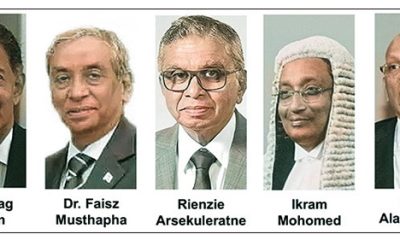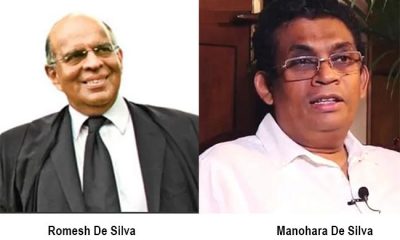Features
How many Lawyers, Accountants does the Minister need to change an electric bulb?

Unbundling the Ceylon Electricity Board:
by Rajan Philips
There is no question – the Ceylon Electricity Board has grown into a public sector behemoth. It has become the Leviathan of Sri Lanka’s political economy. It sucks up government cash and owes an unpayable debt of about LKR600 billion; it counts 21,988 employees on its payroll and is on the hook for their pensions and provident funds; and it charges its consumers at rates much higher than in any other South Asian country. A once exemplary union of Professional Engineers is now disrespected for collective incompetence and systemic corruption. The big sucker needs even bigger time reform. No argument about it.
But how many Lawyers, Accountants and Administrators, and how few Engineers are needed to accomplish power sector reform? That was the first question that arose in my mind while reading the Sri Lanka Electricity Bill that the government introduced in April. I am not the only one, it turns out. The Supreme Court raises the same question and answers it perceptively on page 52 of its ruling on the constitutionality of the Bill following hearings in May:
“It is certainly not a fanciful hypothesis, and it would be fully compliant with Clause 38(2) as it currently reads, for three Attorneys-at-Law with ten years experience to be appointed to the Secretariat and as the Director General. Given the absence of any provision to appoint other staff members to the Secretariat, the Secretariat would not have the benefit of any persons with experience in the field of power system planning and operation or an electrical engineer.”
Judicial Frustration
Here the Court is referring to the setting up of the Power Sector Reform Secretariat, a key one among many agencies in the complex architecture of the new law to reform the power sector, and the criteria for its composition detailed in Section 38, Part XIII of the Bill. The Court’s concerns are outlined under the heading “Expertise of those entrusted to manage the entities that are established,” and they are a response to one of the arguments on behalf of the petitioners that the law must ensure that the newly created “entities are led and managed by experts and professionals with experience in the relevant disciplines, and that the criteria for appointment be laid down to prevent friends and family of the appointing authority from being appointed.”
The Court then makes the clarion call that “the time is certainly ripe for this Court to insist that meritocracy be restored, respected and adhered to when appointments are made by a Minister, or any governmental authority and we therefore take the view that any failure to do so would result in the fundamental rights of the People guaranteed by Article 12(1) being infringed.”
Article 12 (1) enshrines the fundamental right that “All persons are equal before the law and are entitled to the equal protection of the law.” This is quite a statement by the Supreme Court – to emphasize ‘meritocracy’ and to assert the fundamental right of citizens to have meritocracy recognized and observed in any and every instance by any government and every government.
Indeed, the Court held that the Bill as a whole and several of its provisions are inconsistent with Article 12 (1) of the Constitution and suggested a number of amendments to address the inconsistencies and avoid the need for passage by a two-thirds majority. As it has now become the legislative practice in Sri Lanka, the amendments recommended by the Supreme Court were passed during the Committee Stage of the Bill, before the Third Reading and passage on Thursday, June 6. Parliament and the country would seem to have come to take the governments’ word for incorporating mostly substantial amendments in Committee.
One senses an undertone of judicial frustration in the ruling of the Supreme Court on the Electricity Bill that the government finally introduced in April after withdrawing an earlier draft Bill that had been criticized for its significant errors. Obviously, not all the errors had been addressed in the Bill presented to parliament in April, and they became the subject of a number of fundamental rights petitions that the Court heard and seemingly agreed with in its ruling.
Before dealing with the question of meritocracy, the Court summarized the legal submissions on behalf of the petitioners into “two categories”: (1) the “unclear, vague and irrational” provisions of the Bill that the Court itself would seem to have acknowledged as “permeating” much of the Bill; and (2) the “unbridled power” assigned to the Minister by the Bill. The upshot of the two could potentially lead to “arbitrary implementation of the provisions of the Bill.” The Court identified the specific provisions that could lead to arbitrary implementation and suggested amendments to address them.
Addressing the arguments for the government by the Additional Solicitor General on the need for electricity reform and her assertions of safeguards in the Bill against arbitrary implementation, the Court noted that it is “mindful that the task of making policy is the prerogative of the Executive, and that the enactment of laws is within the domain of parliament,” and that “whether the Government wishes to shift the electricity sector from being a Government owned utility provider to a profit earning sector consisting of many players is entirely a matter of policy.”
At the same time, the Court went on, the President and the Cabinet of Ministers must constitutionally be guided by the Directive Principles of State Policy enshrined in Article 27, and specific to the project of unbundling the CEB, it must be carried out without vagueness but with clarity and precision. Otherwise, although the Court did not quite put in this way, the cure of unbundling the CEB might turn out to be worse than the diseased bundle.
Judicial Drafting
Perhaps the most glaring vagueness as some of the Counsel for the Petitioners pointed out with the Court agreeing is in the assignment of dates on which the different provisions of the law will come into operation. The Bill before the Court provided for the main body of the law to come into operation on a date appointed by the Minister or at the end of six months whichever is sooner. Four exceptions were identified. Two of them, namely, the provisions for the establishment of the National Electricity Advisory Council and the establishment of the Power Sector Reforms Secretariat will come into operation upon the enactment of the law by parliament. The other two, the operationalization of open access and the operation of the Wholesale Electricity Market, are both set to commence on dates appointed by the Minister, but the Minister is given a window of five years to determine those dates and the option to extend them one year at a time for another five years.
In other words, the Advisory Council and the Reform Secretariat could be established as soon as parliament enacts the Electricity Act, but without any of the supporting provisions of the law, including the provision stipulating the objectives of the Bill and the provision enabling the making of electricity policy and mobilizing resources, the two agencies would be constrained to function in a vacuum.
The anomaly was pointed out in challenging the constitutionality of the Bill, and the Government was ready at the hearing to submit and confirm that the Bill would be amended at the Committee Stage to include four additional provisions that would also come into operation on the day of law’s enactment, while extending the Minister’s discretion to enable the operation of all the rest of the law from six months to twelve months. Two of the amended additions would activate the objectives of the Bill and enable policy making. The Court found the Government’s addition of four provisions to be inadequate for streamlining the operationalization of the law and added further provisions to enable the establishment of the National System Operator.
It will not be an exaggeration to say that as part previewing bills for their constitutionality, the Supreme Court has been forced to undertake the task of redrafting badly drafted bills. In the case of the Electricity Act, the poor drafting of the Bill is also indicative of the level of competence that the government seems able to muster to implement the reforms of the power sector that the new law sweepingly envisages. The bigger worry should be the warning about the challenges of privatization in Sri Lanka that the late Saman Kelegama once alluded to: “in a weak regulatory and legal framework with weak institutional capacity, poorly managed and badly conceived privatization can compound the problems.” Further, “the weaker the economy and governing institutions, the more difficult it becomes for privatization to yield benefits.”
The Electricity Act is now in place, but the Minister has one year to appoint the date on which most of the provisions of the new law, save those amended by the Supreme Court, to come into operation. He could do it sooner, but the provision of such a long window would suggest that the present government is not confident about having all the pieces in place to operationalize the law. Within one year, there is the certainty of a presidential election and the distinct possibility of a parliamentary election. The obvious and passive question to ask is what will happen to the implementation of the Electricity Act if there were to be a new President after October, and a new parliament next year. The question that ought to be asked, however, is what the opposition leaders who want to be elected as President and form the next government, will do with the Electricity Act.
(To be continued).
Features
A wage for housework? India’s sweeping experiment in paying women
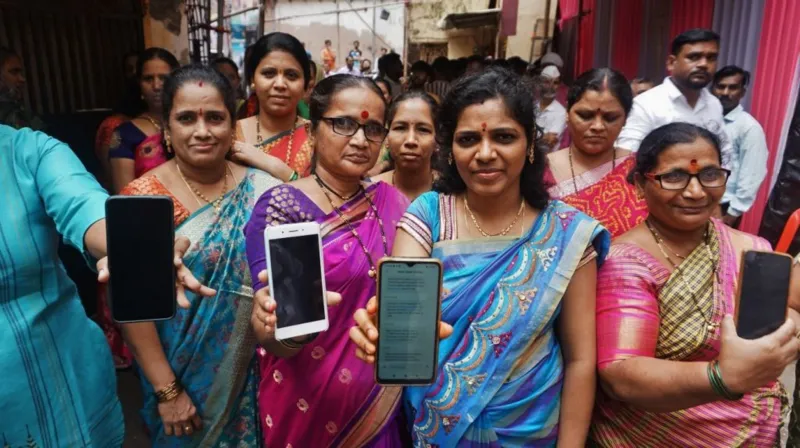
In a village in the central Indian state of Madhya Pradesh, a woman receives a small but steady sum each month – not wages, for she has no formal job, but an unconditional cash transfer from the government.
Premila Bhalavi says the money covers medicines, vegetables and her son’s school fees. The sum, 1,500 rupees ($16: £12), may be small, but its effect – predictable income, a sense of control and a taste of independence – is anything but.
Her story is increasingly common. Across India, 118 million adult women in 12 states now receive unconditional cash transfers from their governments, making India the site of one of the world’s largest and least-studied social-policy experiments.
Long accustomed to subsidising grain, fuel and rural jobs, India has stumbled into something more radical: paying adult women simply because they keep households running, bear the burden of unpaid care and form an electorate too large to ignore.
Eligibility filters vary – age thresholds, income caps and exclusions for families with government employees, taxpayers or owners of cars or large plots of land.
“The unconditional cash transfers signal a significant expansion of Indian states’ welfare regimes in favour of women,” Prabha Kotiswaran, a professor of law and social justice at King’s College London, told the BBC.
The transfers range from 1,000-2,500 rupees ($12-$30) a month – meagre sums, worth roughly 5-12% of household income, but regular. With 300 million women now holding bank accounts, transfers have become administratively simple.
Women typically spend the money on household and family needs – children’s education, groceries, cooking gas, medical and emergency expenses, retiring small debts and occasional personal items like gold or small comforts.
What sets India apart from Mexico, Brazil or Indonesia – countries with large conditional cash-transfer schemes – is the absence of conditions: the money arrives whether or not a child attends school or a household falls below the poverty line.
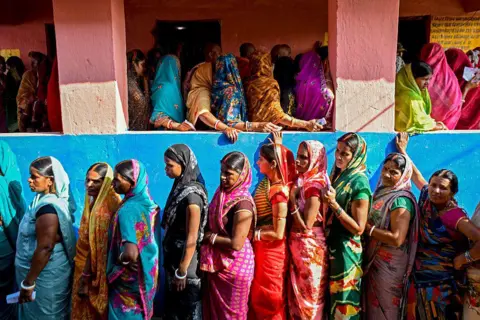
Goa was the first state to launch an unconditional cash transfer scheme to women in 2013. The phenomenon picked up just before the pandemic in 2020, when north-eastern Assam rolled out a scheme for vulnerable women. Since then these transfers have turned into a political juggernaut.
The recent wave of unconditional cash transfers targets adult women, with some states acknowledging their unpaid domestic and care work. Tamil Nadu frames its payments as a “rights grant” while West Bengal’s scheme similarly recognises women’s unpaid contributions.
In other states, the recognition is implicit: policymakers expect women to use the transfers for household and family welfare, say experts.
This focus on women’s economic role has also shaped politics: in 2021, Tamil actor-turned-politician Kamal Haasan promised “salaries for housewives”. (His fledgling party lost.) By 2024, pledges of women-focused cash transfers helped deliver victories to political parties in Maharashtra, Jharkhand, Odisha, Haryana and Andhra Pradesh.
In the recent elections in Bihar, the political power of cash transfers was on stark display. In the weeks before polling in the country’s poorest state, the government transferred 10,000 rupees ($112; £85) to 7.5 million female bank accounts under a livelihood-generation scheme. Women voted in larger numbers than men, decisively shaping the outcome.
Critics called it blatant vote-buying, but the result was clear: women helped the Bharatiya Janata Party (BJP)-led coalition secure a landslide victory. Many believe this cash infusion was a reminder of how financial support can be used as political leverage.
Yet Bihar is only one piece of a much larger picture. Across India, unconditional cash transfers are reaching tens of millions of women on a regular basis.
Maharashtra alone promises benefits for 25 million women; Odisha’s scheme reaches 71% of its female voters.
In some policy circles, the schemes are derided as vote-buying freebies. They also put pressure on state finances: 12 states are set to spend around $18bn on such payouts this fiscal year. A report by think-tank PRS Legislative Research notes that half of these states face revenue deficits – this happens when a state borrows to pay regular expenses without creating assets.
But many argue they also reflect a slow recognition of something India’s feminists have argued for decades: the economic value of unpaid domestic and care work.
Women in India spent nearly five hours a day on such work in 2024 – more than three times the time spent by men, according to the latest Time Use Survey. This lopsided burden helps explain India’s stubbornly low female labour-force participation. The cash transfers, at least, acknowledge the imbalance, experts say.
Do they work?
Evidence is still thin but instructive. A 2025 study in Maharashtra found that 30% of eligible women did not register – sometimes because of documentation problems, sometimes out of a sense of self-sufficiency. But among those who did, nearly all controlled their own bank accounts.
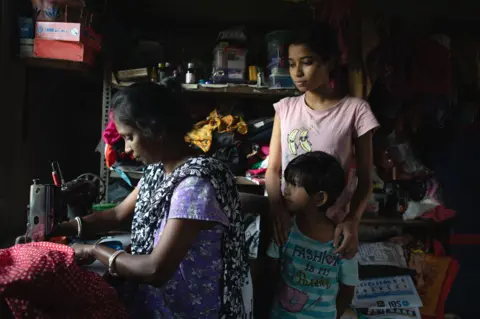
A 2023 survey in West Bengal found that 90% operated their accounts themselves and 86% decided how to spend the money. Most used it for food, education and medical costs; hardly transformative, but the regularity offered security and a sense of agency.
More detailed work by Prof Kotiswaran and colleagues shows mixed outcomes.
In Assam, most women spent the money on essentials; many appreciated the dignity it afforded, but few linked it to recognition of unpaid work, and most would still prefer paid jobs.
In Tamil Nadu, women getting the money spoke of peace of mind, reduced marital conflict and newfound confidence – a rare social dividend. In Karnataka, beneficiaries reported eating better, gaining more say in household decisions and wanting higher payments.
Yet only a sliver understood the scheme as compensation for unpaid care work; messaging had not travelled. Even so, women said the money allowed them to question politicians and manage emergencies. Across studies, the majority of women had full control of the cash.
“The evidence shows that the cash transfers are tremendously useful for women to meet their own immediate needs and those of their households. They also restore dignity to women who are otherwise financially dependent on their husbands for every minor expense,” Prof Kotiswaran says.
Importantly, none of the surveys finds evidence that the money discourages women from seeking paid work or entrench gender roles – the two big feminist fears, according to a report by Prof Kotiswaran along with Gale Andrew and Madhusree Jana.
Nor have they reduced women’s unpaid workload, the researchers find. They do, however, strengthen financial autonomy and modestly strengthen bargaining power. They are neither panacea nor poison: they are useful but limited tools, operating in a patriarchal society where cash alone cannot undo structural inequities.
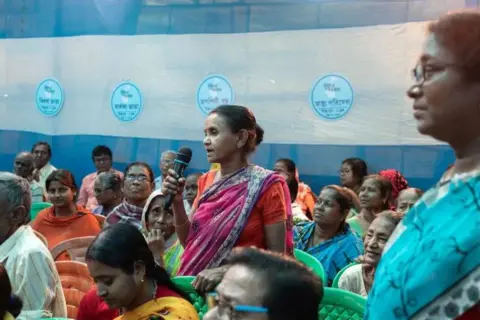
What next?
The emerging research offers clear hints.
Eligibility rules should be simplified, especially for women doing heavy unpaid care work. Transfers should remain unconditional and independent of marital status.
But messaging should emphasise women’s rights and the value of unpaid work, and financial-literacy efforts must deepen, researchers say. And cash transfers cannot substitute for employment opportunities; many women say what they really want is work that pays and respect that endures.
“If the transfers are coupled with messaging on the recognition of women’s unpaid work, they could potentially disrupt the gendered division of labour when paid employment opportunities become available,” says Prof Kotiswaran.
India’s quiet cash transfers revolution is still in its early chapters. But it already shows that small, regular sums – paid directly to women – can shift power in subtle, significant ways.
Whether this becomes a path to empowerment or merely a new form of political patronage will depend on what India chooses to build around the money.
[BBC]
Features
People set example for politicians to follow

Some opposition political parties have striven hard to turn the disaster of Cyclone Ditwah to their advantage. A calamity of such unanticipated proportions ought to have enabled all political parties to come together to deal with this tragedy. Failure to do so would indicate both political and moral bankruptcy. The main issue they have forcefully brought up is the government’s failure to take early action on the Meteorological Department’s warnings. The Opposition even convened a meeting of their own with former President Ranil Wickremesinghe and other senior politicians who shared their experience of dealing with natural and man-made disasters of the past, and the present government’s failures to match them.
The difficulty to anticipate the havoc caused by the cyclone was compounded by the neglect of the disaster management system, which includes previous governments that failed to utilise the allocated funds in an open, transparent and corruption free manner. Land designated as “Red Zones” by the National Building Research Organisation (NBRO), a government research and development institute, were built upon by people and ignored by successive governments, civil society and the media alike. NBRO was established in 1984. According to NBRO records, the decision to launch a formal “Landslide Hazard Zonation Mapping Project (LHMP)” dates from 1986. The institutional process of identifying landslide-prone slopes, classifying zones (including what we today call “Red Zones”), and producing hazard maps, started roughly 35 to 40 years ago.
Indonesia, Thailand and the Philippines which were lashed by cyclones at around the same time as Sri Lanka experienced Cyclone Ditwah were also unprepared and also suffered enormously. The devastation caused by cyclones in the larger southeast Asian region is due to global climate change. During Cyclone Ditwah some parts of the central highlands received more than 500 mm of rainfall. Official climatological data cite the average annual rainfall for Sri Lanka as roughly 1850 mm though this varies widely by region: from around 900 mm in the dry zones up to 5,000 mm in wet zones. The torrential rains triggered by Ditwah were so heavy that for some communities they represented a rainfall surge comparable to a major part of their typical annual rainfall.
Inclusive Approach
Climate change now joins the pantheon of Sri Lanka’s challenges that are beyond the ability of a single political party or government to resolve. It is like the economic bankruptcy, ethnic conflict and corruption in governance that requires an inclusive approach in which the Opposition, civil society, religious society and the business community need to join rather than merely criticise the government. It will be in their self-interest to do so. A younger generation (Gen Z), with more energy and familiarity with digital technologies filled, the gaps that the government was unable to fill and, in a sense, made both the Opposition and traditional civil society redundant.
Within hours of news coming in that floods and landslides were causing havoc to hundreds of thousands of people, a people’s movement for relief measures was underway. There was no one organiser or leader. There were hundreds who catalysed volunteers to mobilise to collect resources and to cook meals for the victims in community kitchens they set up. These community kitchens sprang up in schools, temples, mosques, garages and even roadside stalls. Volunteers used social media to crowdsource supplies, match donors with delivery vehicles, and coordinate routes that had become impassable due to fallen trees or mudslides. It was a level of commitment and coordination rarely achieved by formal institutions.
The spontaneous outpouring of support was not only a youth phenomenon. The larger population, too, contributed to the relief effort. The Galle District Secretariat sent 23 tons of rice to the cyclone affected areas from donations brought by the people. The Matara District Secretariat made arrangements to send teams of volunteers to the worst affected areas. Just as in the Aragalaya protest movement of 2022, those who joined the relief effort were from all ethnic and religious communities. They gave their assistance to anyone in need, regardless of community. This showed that in times of crisis, Sri Lankans treat others without discrimination as human beings, not as members of specific communities.
Turning Point
The challenge to the government will be to ensure that the unity among the people that the cyclone disaster has brought will outlive the immediate relief phase and continue into the longer term task of national reconstruction. There will be a need to rethink the course of economic development to ensure human security. President Anura Kumara Dissanayake has spoken about the need to resettle all people who live above 5000 feet and to reforest those areas. This will require finding land for resettlement elsewhere. The resettlement of people in the hill country will require that the government address the issue of land rights for the Malaiyaha Tamils.
Since independence the Malaiyaha Tamils have been collectively denied ownership to land due first to citizenship issues and now due to poverty and unwillingness of plantation managements to deal with these issues in a just and humanitarian manner beneficial to the workers. Their resettlement raises complex social, economic and political questions. It demands careful planning to avoid repeating past mistakes where displaced communities were moved to areas lacking water, infrastructure or livelihoods. It also requires political consensus, as land is one of the most contentious issues in Sri Lanka, tied closely to identity, ethnicity and historical grievances. Any sustainable solution must go beyond temporary relocation and confront the historical exclusion of the Malaiyaha Tamil community, whose labour sustains the plantation economy but who remain among the poorest groups in the country.
Cyclone Ditwah has thus become a turning point. It has highlighted the need to strengthen governance and disaster preparedness, but it has also revealed a different possibility for Sri Lanka, one in which the people lead with humanity and aspire for the wellbeing of all, and the political leadership emulates their example. The people have shown through their collective response to Cyclone Ditwah that unity and compassion remain strong, which a sincere, moral and hardworking government can tap into. The challenge to the government will be to ensure that the unity among the people that the cyclone disaster has brought will outlive the immediate relief phase and continue into the longer term task of national reconstruction with political reconciliation.
by Jehan Perera
Features
An awakening: Revisiting education policy after Cyclone Ditwah

 In the short span of two or three days, Cyclone Ditwah, has caused a disaster of unprecedented proportions in our midst. Lashing away at almost the entirety of the country, it has broken through the ramparts of centuries old structures and eroded into areas, once considered safe and secure.
In the short span of two or three days, Cyclone Ditwah, has caused a disaster of unprecedented proportions in our midst. Lashing away at almost the entirety of the country, it has broken through the ramparts of centuries old structures and eroded into areas, once considered safe and secure.
The rains may have passed us by. The waters will recede, shops will reopen, water will be in our taps, and we can resume the daily grind of life. But it will not be the same anymore; it should not be. It should not be business as usual for any of us, nor for the government. Within the past few years, Sri Lankan communities have found themselves in the middle of a crisis after crisis, both natural and man-made, but always made acute by the myopic policies of successive governments, and fuelled by the deeply hierarchical, gendered and ethnicised divides that exist within our societies. The need of the hour for the government today is to reassess its policies and rethink the directions the country, as a whole, has been pushed into.
Neoliberal disaster
In the aftermath of the devastation caused by the natural disaster, fundamental questions have been raised about our existence. Our disaster is, in whole or in part, the result of a badly and cruelly managed environment of the planet. Questions have been raised about the nature of our economy. We need to rethink the way land is used. Livelihoods may have to be built anew, promoting people’s welfare, and by deveoloping a policy on climate change. Mega construction projects is a major culprit as commentators have noted. Landslides in the upcountry are not merely a result of Ditwah lashing at our shores and hills, but are far more structural and points to centuries of mismanagement of land. (https://island.lk/weather-disasters-sri-lanka-flooded-by-policy-blunders-weak-enforcement-and-environmental-crime-climate-expert/). It is also about the way people have been shunted into lands, voluntarily or involuntarily, that are precarious, in their pursuit of a viable livelihood, within the limited opportunities available to them.
Neo liberal policies that demand unfettered land appropriation and built on the premise of economic growth at any expense, leading to growing rural-urban divides, need to be scrutinised for their short and long term consequences. And it is not that any of these economic drives have brought any measure of relief and rejuvenation of the economy. We have been under the tyrannical hold of the IMF, camouflaged as aid and recovery, but sinking us deeper into the debt trap. In October 2025, Ahilan Kadirgamar writes, that the IMF programme by the end of 2027, “will set up Sri Lanka for the next crisis.” He also lambasts the Central Bank and the government’s fiscal policy for their punishing interest rates in the context of disinflation and rising poverty levels. We have had to devalue the rupee last month, and continue to rely on the workforce of domestic workers in West Asia as the major source of foreign exchange. The government’s negotiations with the IMF have focused largely on relief and infrastructure rebuilding, despite calls from civil society, demanding debt justice.
The government has unabashedly repledged its support for the big business class. The cruelest cut of them all is the appointment of a set of high level corporate personalities to the post-disaster recovery committee, with the grand name, “Rebuilding Sri Lanka.” The message is loud and clear, and is clearly a slap in the face of the working people of the country, whose needs run counter to the excessive greed of extractive corporate freeloaders. Economic growth has to be understood in terms that are radically different from what we have been forced to think of it as, till now. For instance, instead of investment for high profits, and the business of buy and sell in the market, rechannel investment and labour into overall welfare. Even catch phrases like sustainable development have missed their mark. We need to think of the economy more holistically and see it as the sustainability of life, livelihood and the wellbeing of the planet.
The disaster has brought on an urgency for rethinking our policies. One of the areas where this is critical is education. There are two fundamental challenges facing education: Budget allocation and priorities. In an address at a gathering of the Chamber of Commerce, on 02 December, speaking on rebuilding efforts, the Prime Minister and Minister of Education Dr. Harini Amarasuriya restated her commitment to the budget that has been passed, a budget that has a meagre 2.4% of the GDP allocated for education. This allocation for education comes in a year that educational reforms are being rolled out, when heavy expenses will likely be incurred. In the aftermath of the disaster, this has become more urgent than ever.
Reforms in Education
The Government has announced a set of amendments to educational policy and implementation, with little warning and almost no consultation with the public, found in the document, Transforming General Education in Sri Lanka 2025 published by the Ministry of Education. Though hailed as transformative by the Prime Minister (https://www.news.lk/current-affairs/in-the-prevailing-situation-it-is-necessary-to-act-strategically-while-creating-the-proper-investments-ensuring-that-actions-are-discharged-on-proper-policies-pm), the policy is no more than a regurgitation of what is already there, made worse. There are a few welcome moves, like the importance placed on vocational training. Here, I want to raise three points relating to vital areas of the curriculum that are of concern: 1) streamlining at an early age; relatedly 2) prioritising and privileging what is seen as STEM education; and 3) introducing a credit-based modular education.
1. A study of the policy document will demonstrate very clearly that streamlining begins with Junior Secondary Education via a career interest test, that encourages students to pursue a particular stream in higher studies. Further Learning Modules at both “Junior Secondary Education” and “Senior Secondary Education Phase I,” entrench this tendency. Psychometric testing, that furthers this goal, as already written about in our column (https://kuppicollective.lk/psychometrics-and-the-curriculum-for-general-education/) points to the bizarre.
2. The kernel of the curriculum of the qualifying examination of Senior Secondary Education Phase I, has five mandatory subjects, including First Language, Math, and Science. There is no mandatory social science or humanities related subject. One can choose two subjects from a set of electives that has history and geography as separate subjects, but a Humanities/Social Science subject is not in the list of mandatory subjects. .
3. A credit-based, modular education: Even in universities, at the level of an advanced study of a discipline, many of us are struggling with module-based education. The credit system promotes a fragmented learning process, where, depth is sacrificed for quick learning, evaluated numerically, in credit values.
Units of learning, assessed, piece meal, are emphasised over fundamentals and the detailing of fundamentals. Introducing a module based curriculum in secondary education can have an adverse impact on developing the capacity of a student to learn a subject in a sustained manner at deeper levels.
Education wise, and pedagogically, we need to be concerned about rigidly compartmentalising science oriented, including technological subjects, separately from Humanities and Social Studies. This cleavage is what has led to the idea of calling science related subjects, STEM, automatically devaluing humanities and social sciences. Ironically, universities, today, have attempted, in some instances, to mix both streams in their curriculums, but with little success; for the overall paradigm of education has been less about educational goals and pedagogical imperatives, than about technocratic priorities, namely, compartmentalisation, fragmentation, and piecemeal consumerism. A holistic response to development needs to rethink such priorities, categorisations and specialisations. A social and sociological approach has to be built into all our educational and development programmes.
National Disasters and Rebuilding Community
In the aftermath of the disaster, the role of education has to be rethought radically. We need a curriculum that is not trapped in the dichotomy of STEM and Humanities, and be overly streamlined and fragmented. The introduction of climate change as a discipline, or attention to environmental destruction cannot be a STEM subject, a Social Science/Humanities subject or even a blend of the two. It is about the vision of an economic-cum-educational policy that sees the environment and the economy as a function of the welfare of the people. Educational reforms must be built on those fundamentals and not on real or imagined short term goals, promoted at the economic end by neo liberal policies and the profiteering capitalist class.
As I write this, the sky brightens with its first streaks of light, after days of incessant rain and gloom, bringing hope into our hearts, and some cheer into the hearts of those hundreds of thousands of massively affected people, anxiously waiting for a change in the weather every second of their lives. The sense of hope that allows us to forge ahead is collective and social. The response by Lankan communities, to the disaster, has been tremendously heartwarming, infusing hope into what still is a situation without hope for many. This spirit of collective endeavour holds the promise for what should be the foundation for recovery. People’s demands and needs should shape the re-envisioning of policy, particularly in the vital areas of education and economy.
(Sivamohan Sumathy was formerly attached to the Department of English, University of Peradeniya)
Kuppi is a politics and pedagogy happening on the margins of the lecture hall that parodies, subverts, and simultaneously reaffirms social hierarchies.
By Sivamohan Sumathy
-
News6 days ago
Lunuwila tragedy not caused by those videoing Bell 212: SLAF
-

 News1 day ago
News1 day agoOver 35,000 drug offenders nabbed in 36 days
-
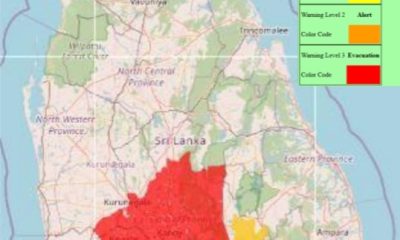
 News5 days ago
News5 days agoLevel III landslide early warning continue to be in force in the districts of Kandy, Kegalle, Kurunegala and Matale
-

 Business3 days ago
Business3 days agoLOLC Finance Factoring powers business growth
-

 News3 days ago
News3 days agoCPC delegation meets JVP for talks on disaster response
-

 News3 days ago
News3 days agoA 6th Year Accolade: The Eternal Opulence of My Fair Lady
-

 News1 day ago
News1 day agoRising water level in Malwathu Oya triggers alert in Thanthirimale
-

 Midweek Review6 days ago
Midweek Review6 days agoHouse erupts over Met Chief’s 12 Nov unheeded warning about cyclone Ditwah


